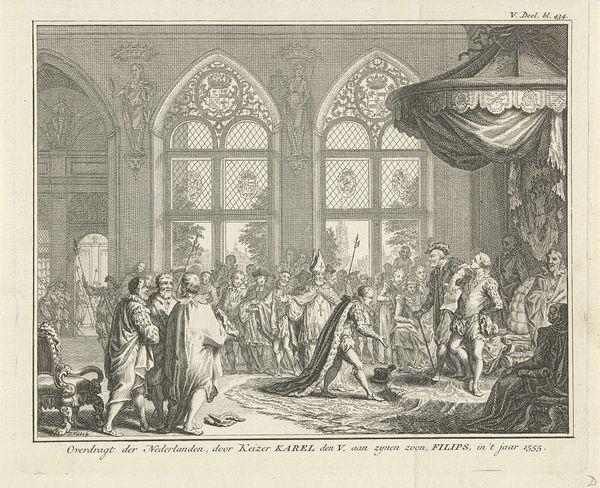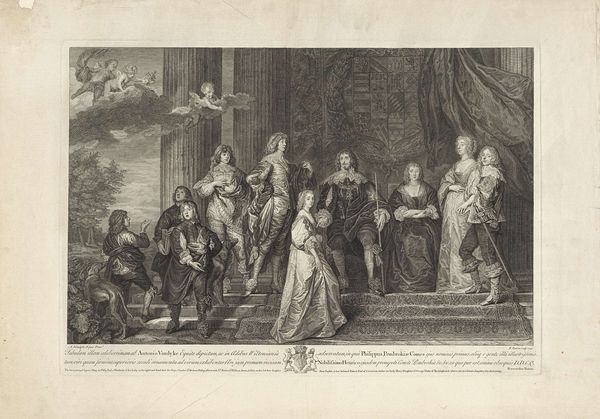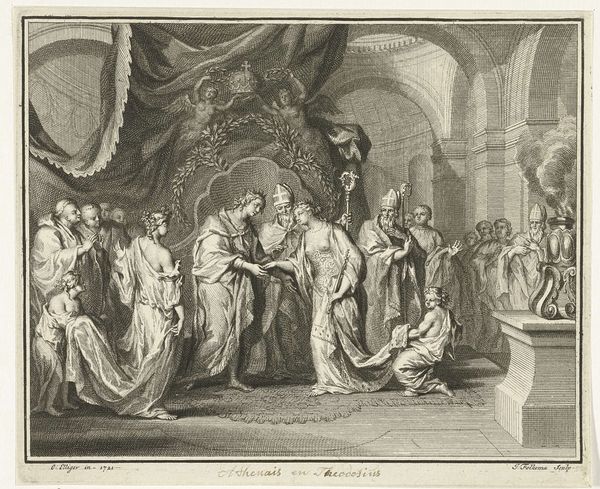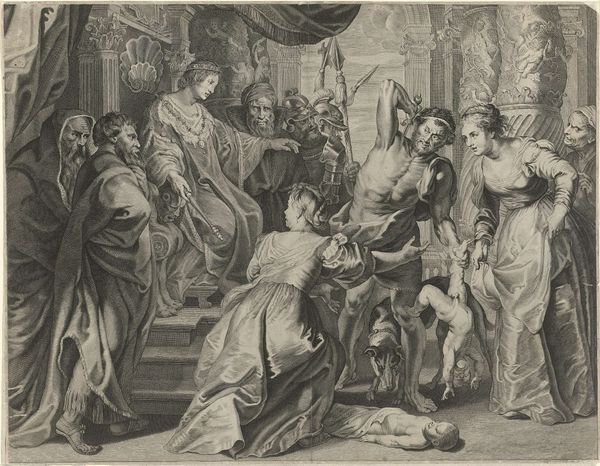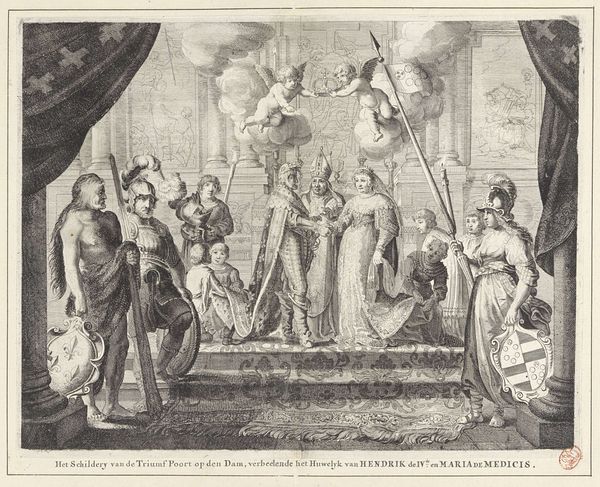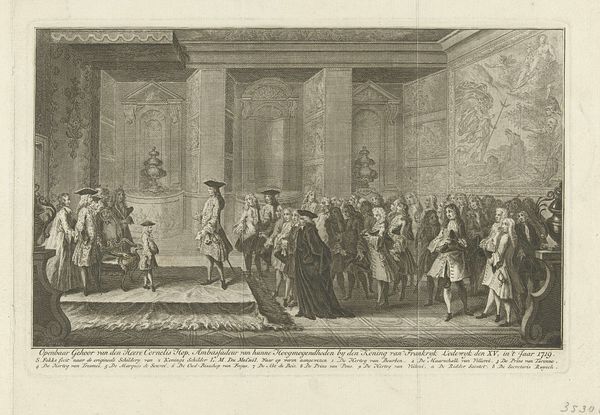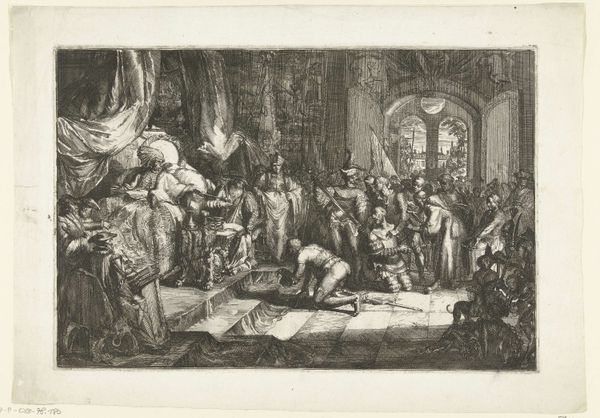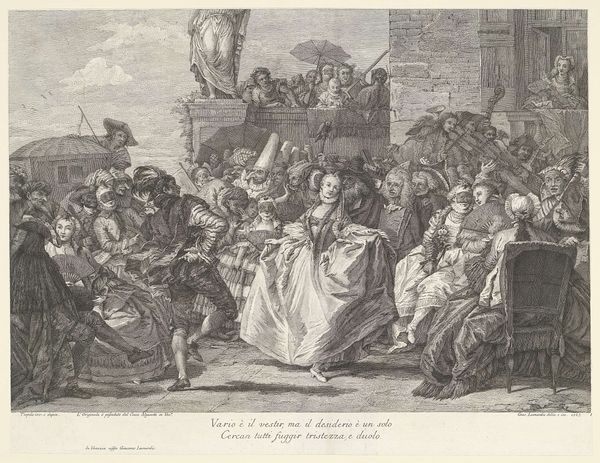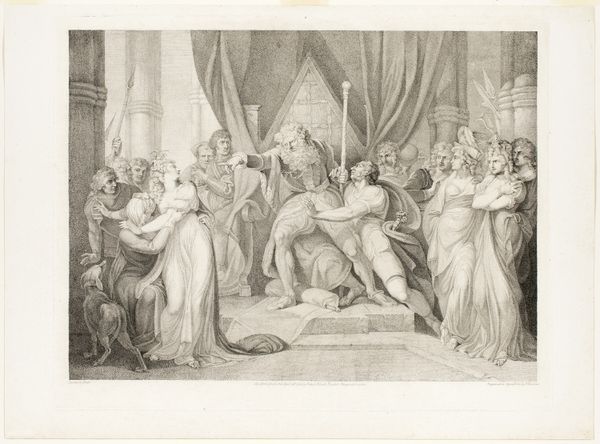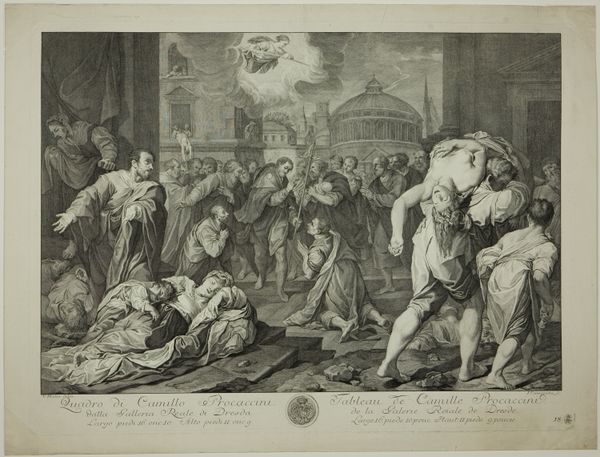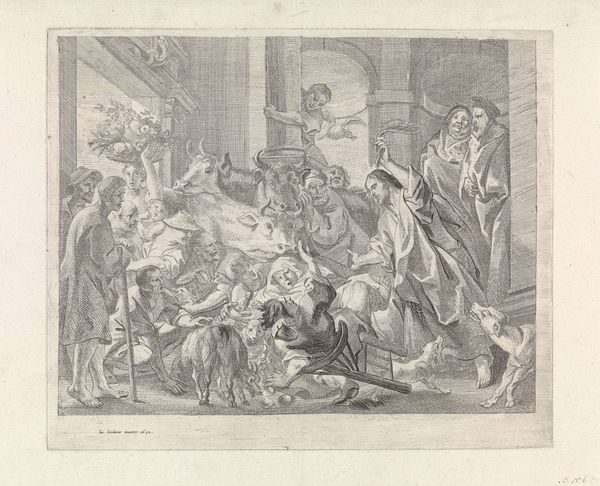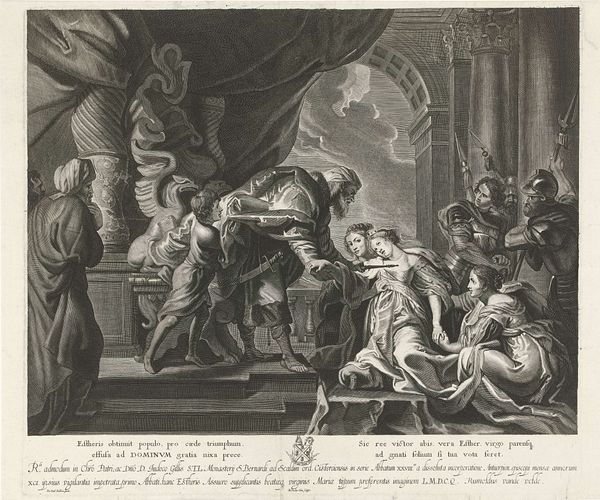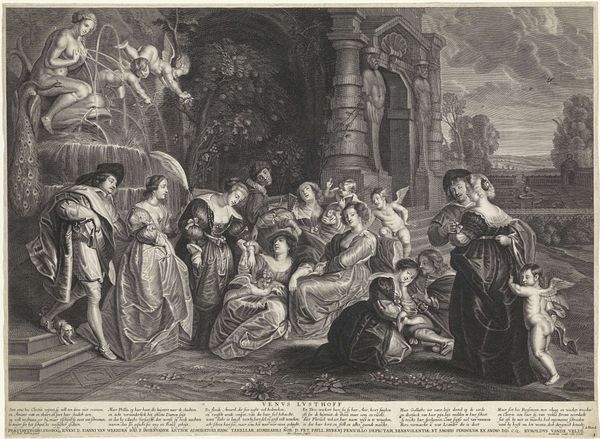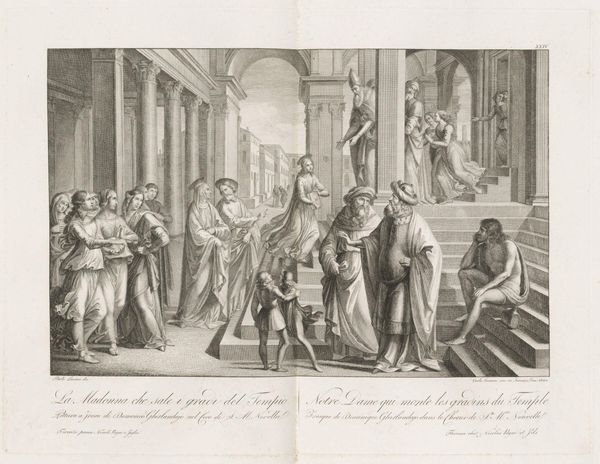
engraving
#
baroque
#
old engraving style
#
caricature
#
history-painting
#
engraving
Dimensions: height 155 mm, width 186 mm
Copyright: Rijks Museum: Open Domain
Curator: Bernard Picart created this engraving titled “Baptism of Clovis I by Remigius of Reims” in 1721. You can find it here at the Rijksmuseum. Editor: What immediately strikes me is the performative quality. The theatrical arrangement of figures almost overpowers the supposedly sacred event itself. Curator: Yes, Baroque art often employed theatricality to evoke emotion and engage the viewer. The symbols are quite pointed. The placement of Clovis lower than the archbishop Remigius, and the presence of an angel above—aren’t these supposed to assert the authority of the Church and divine intervention? Editor: Precisely! And what about the figures cast aside? Look, to the right and in the foreground: a discarding of older pagan beliefs being replaced by the Christian faith—yet told through a lens filtered by centuries of power consolidation. Curator: Symbolically, the gesture of cleansing in the baptism itself reflects the cleansing of the soul. Even the chandelier illuminates the holy action. And isn't the crowd, bathed in light, supposed to reinforce a collective commitment and spiritual transformation? Editor: A very curated commitment, I’d say! Considering France's fraught history with religion and monarchy, this image serves as propaganda, reinforcing notions of divine right and national identity intertwined with the Church. The “history painting” tag flattens how ideological it is! Curator: Interesting perspective. Perhaps focusing solely on its surface narrative disregards its depth as an iconographic artifact, though. We should ask ourselves what continuities it served in the cultural memory of its original viewers, who may have been more receptive to the themes it represents. Editor: I see it differently. This is part of an ongoing historical process in which representation is constantly negotiated. By understanding this, we don’t merely accept history but can critically engage with it, questioning the dominant narratives it perpetuates. Curator: A challenge that encourages reinterpretation... Editor: And demands it! The work prompts essential discussion.
Comments
No comments
Be the first to comment and join the conversation on the ultimate creative platform.
